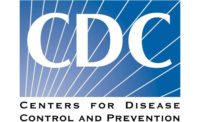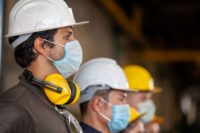OSHA has additional guidance for employers and workers in the healthcare industry, including recommendations for implementation of standard, contact, and airborne precautions (including wearing gowns, gloves, NIOSH certified disposable N95 or better respirators, and eye/face protection). Overall, OSHA says that all workers who may be exposed should do the following:
- Frequently wash your hands with soap and water for at least 20 seconds
- Avoid touching your eyes, nose, or mouth with unwashed hands
- Avoid close contact with people who are sick
In addition, OSHA has issued specific guidance for employers and workers in the following industries: healthcare workers, clinical laboratory workers, airline workers, border protection workers, and waste management workers. Finally, OSHA refers US business travelers to the CDC’s Travel Notice.
Health and Travel Advisories
President Donald Trump has declared a public health emergency over the 2019-nCoV. As of the date of this publication, nearly 200 Americans are now subject to a mandatory quarantine upon returning to the United States from China's Hubei province – the first such government quarantine order in more than 50 years. However, the Administration is being careful to downplay the threat of the virus to Americans, as the infection rate and risk of infection remains low.
On January 27, the CDC issued updated travel guidance for China, recommending that travelers avoid all nonessential travel to the country.
On January 31, Alex Azar, Secretary of Health and Human Services and Chairman of the President’s Task Force on the Novel Coronavirus, declared that 2019-nCoV presented a public health emergency in the United States. The following measures are now in effect:
- Foreign nationals who visited China in the 14 days prior to their arrival to the United States will be denied entry into the United States unless they are the spouses or immediate relatives of a US citizen or permanent resident (list of exceptions).
- US citizens who have been in China’s Hubei province within 14 days of their return will be subject to up to 14 days of mandatory quarantine to ensure they are provided proper medical care and health screening.
- US citizens who have been in other areas of mainland China within 14 days of their return will undergo proactive entry health screening and up to 14 days of self-quarantine with health monitoring to ensure they have not contracted the virus and do not pose a public health risk.
All flights coming to the United States that are carrying persons that were in the People’s Republic of China within 14 days of their arrival must land at one of 11 designated airports where the CDC will be able to perform enhanced health screenings on the passengers of these flights upon arrival. Under these new arrival restrictions, these screenings will not apply to flights that are only carrying cargo.
The 11 designated airports that are under this notice include the following:
- John F. Kennedy International Airport (JFK), New York
- Chicago O’Hare International Airport (ORD), Illinois
- San Francisco International Airport (SFO), California
- Seattle-Tacoma International Airport (SEA), Washington
- Daniel K. Inouye International Airport (HNL), Hawaii
- Los Angeles International Airport, (LAX), California
- Hartsfield-Jackson Atlanta International Airport (ATL), Georgia
- Washington-Dulles International Airport (IAD), Virginia
- Newark Liberty International Airport (EWR), New Jersey
- Dallas/Fort Worth International Airport (DFW), Texas
- Detroit Metropolitan Airport (DTW), Michigan
CDC and the US Customs and Border Protection (CBP) are implementing enhanced health screenings to detect travelers with fever, cough, or difficulty breathing when entering the United States. The screening procedures include the following:
- Travelers fill out a short questionnaire about their travel, any symptoms, and contact information
- CDC staff take the temperature of each traveler with a hand-held non-contact thermometer (thermometers that do not touch the skin) and observe the traveler for cough or difficulty breathing
- If sick travelers are identified, CDC evaluates them further to determine whether they should be taken to a hospital for medical evaluation and to get care as needed
If the traveler does not have symptoms, CDC staff will provide health information cards to take with them. The cards tell travelers what symptoms to look out for, and what to do if they develop symptoms within 14 days after leaving China.
Protecting the Confidentiality of Medical Information and Protecting Employees from Unnecessary Medical Inquiries, Harassment, and Discrimination
Employers must respect workers’ privacy—and, particularly, the confidentiality of their medical information pursuant to the Americans with Disabilities Act (ADA)—and they must comply with rules and guidance from OSHA, the CDC, the EEOC, and other agencies. Employers should balance their need to ensure workplace safety with their obligation to avoid unnecessary or overbroad medical inquiries, which are prohibited by the ADA. Of course, if an employee is exhibiting symptoms of 2019-nCoV, it is appropriate to urge him or her to see a doctor. However, the decision to send an employee for a medical exam or to request medical documentation should be based on objective information, not unfounded fears that may or may not be grounded in reality. As an example, it could be risky to request medical information simply because an employee visited China. Employers should look to CDC guidance to determine what inquiries are appropriate to make.
Employers should also...






